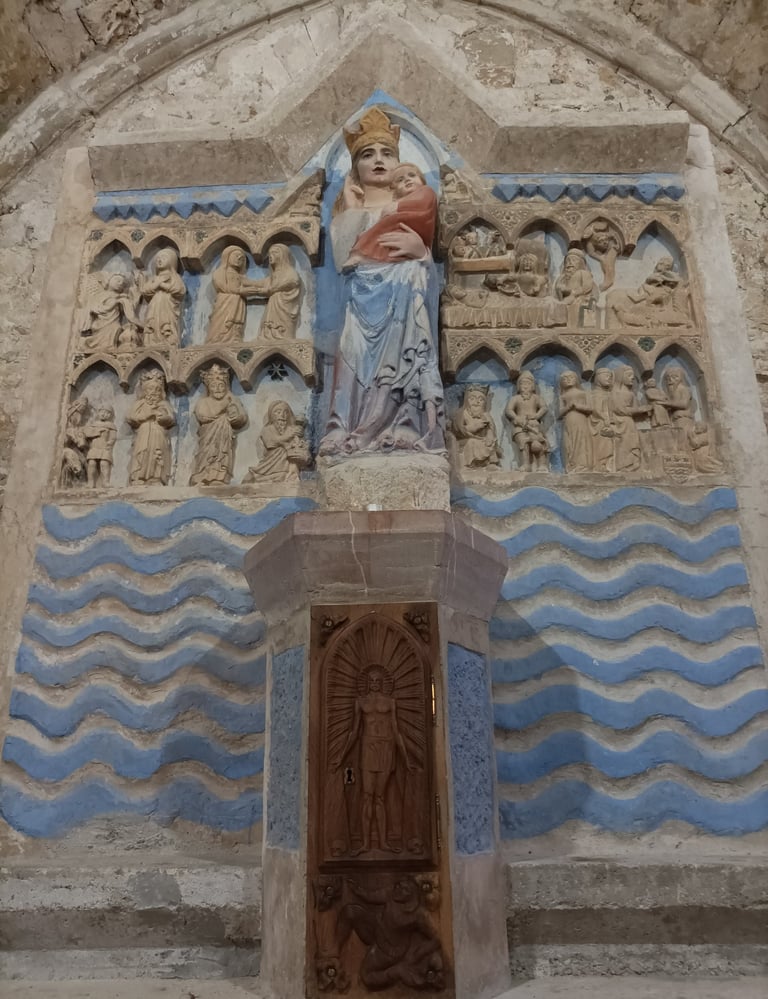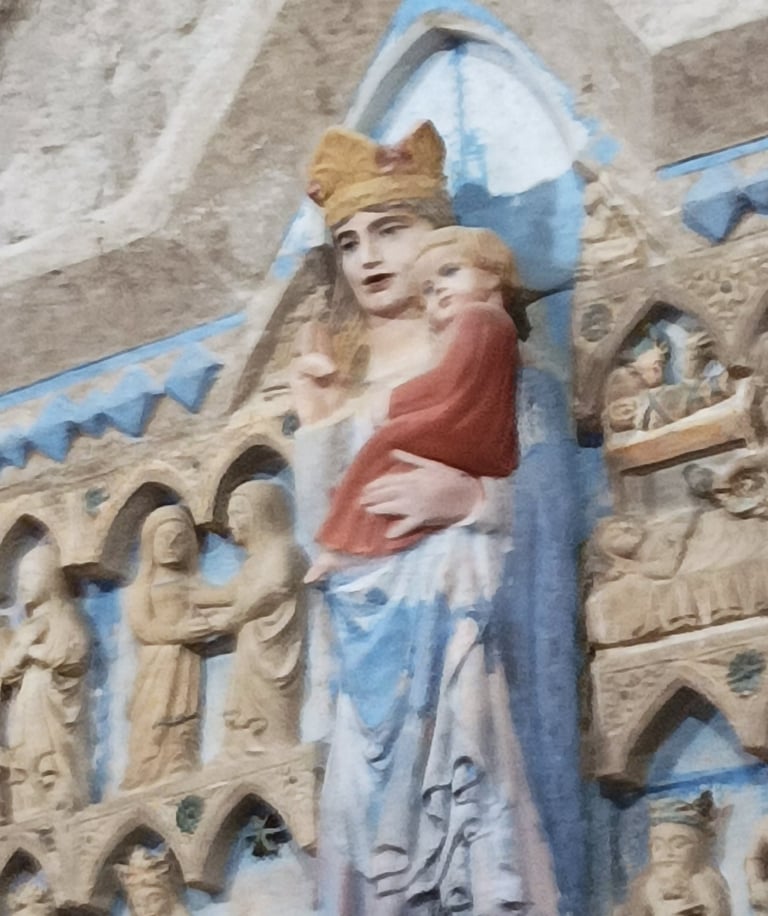
Of Cads and Opium Dens
A bit of a stir in the woods
FILMS , MUSIC, DRAMA AND ARTBUILDINGS AND ARCHITECTURE
Joan
8/13/20234 min read
First of all let me take you on a walk through our forest, 'la Forêt Domaniale de Parlatges.' We will follow the old track that runs in front of our house. This used to link St Etienne with the tiny village of Parlatges, which lies higher up the valley. Today a busy road runs close by, but best to avoid that. Parlatges is charming with its traditional stone houses, steep winding streets, a tiny stone bridge, and a fine church, 'Notre Dame de Parlatges.' Once, for one day every year, people from Lodève would make a pilgrimage here. Mass would be followed by a visit to the cool fontaine which still flows by the bridge, and a communal picnic in the fields. Sadly, as cars began to arrive on the scene, the picnic and communal festivities were abandoned, although people still make individual pilgrimages to the church to this day, for it is reputed to bring healing to mute children, or those suffering from delayed language development. Photographs of visiting happy children are displayed as you enter.
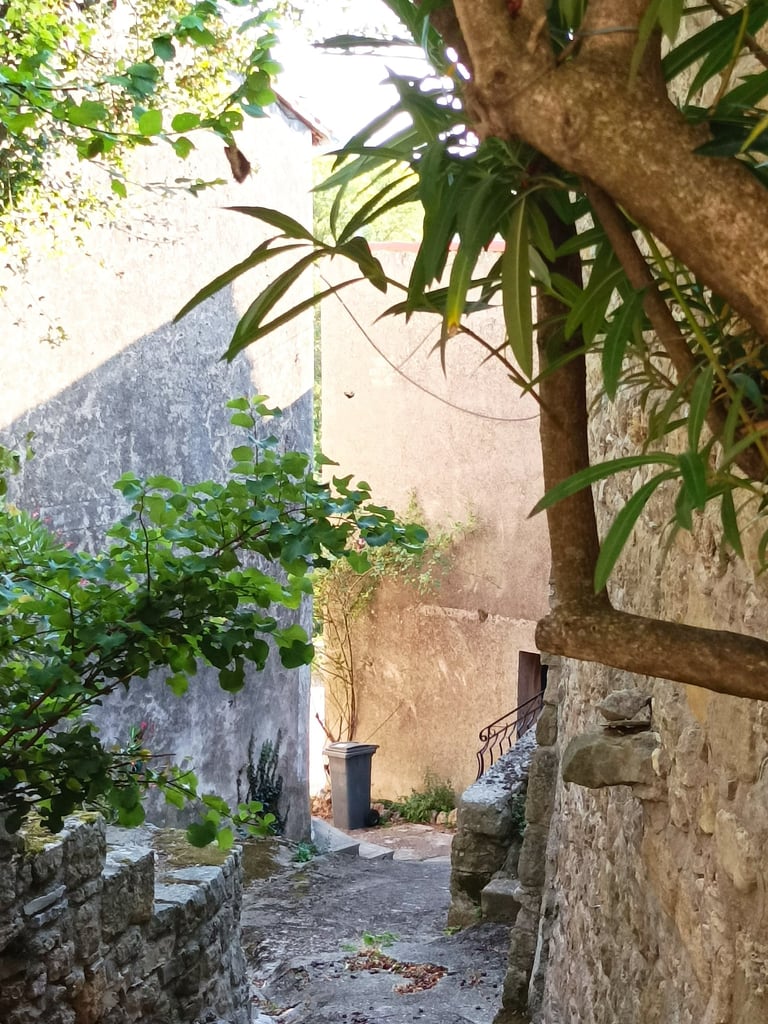


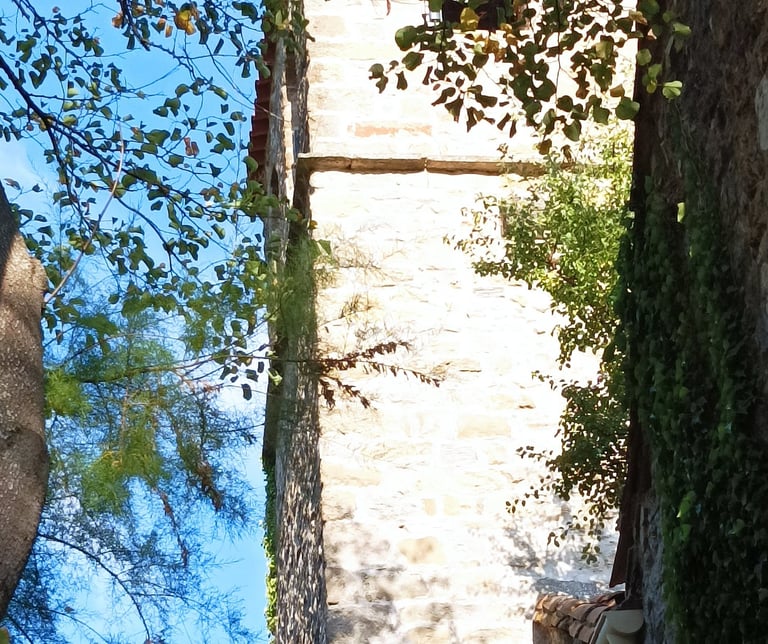
Today we have come especially to visit the church, because it has strong links with Paul Dardé. In 1911 a ministerial decree declared that the church and its 14th Century altar piece , with scenes from the life of Christ, and a statue of the Virgin and Child , was in disrepair. The local mayor reported back that the necessary measures would be undertaken. Paul Dardé agreed to repair the altar piece, and he began work on it in 1927.
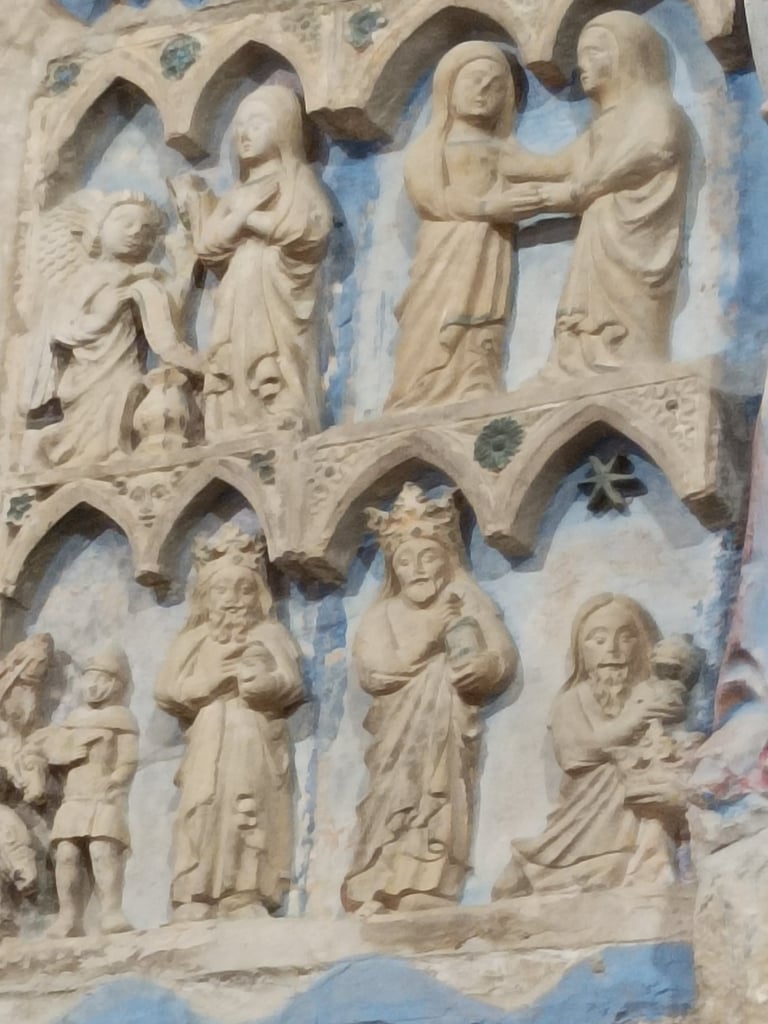

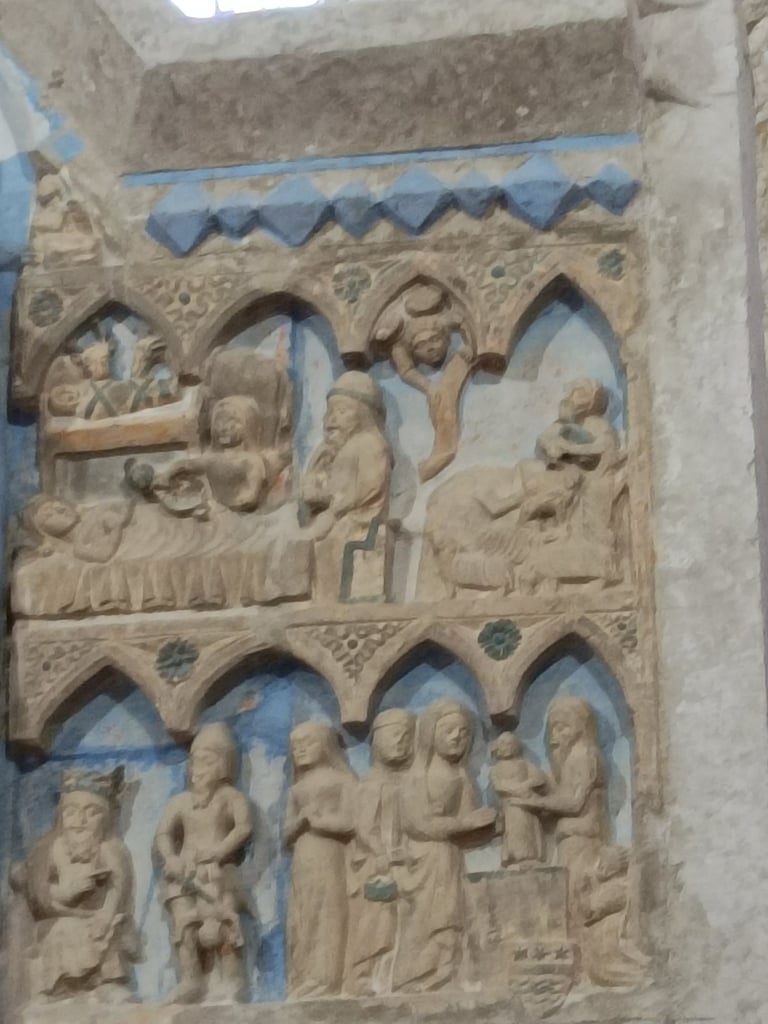

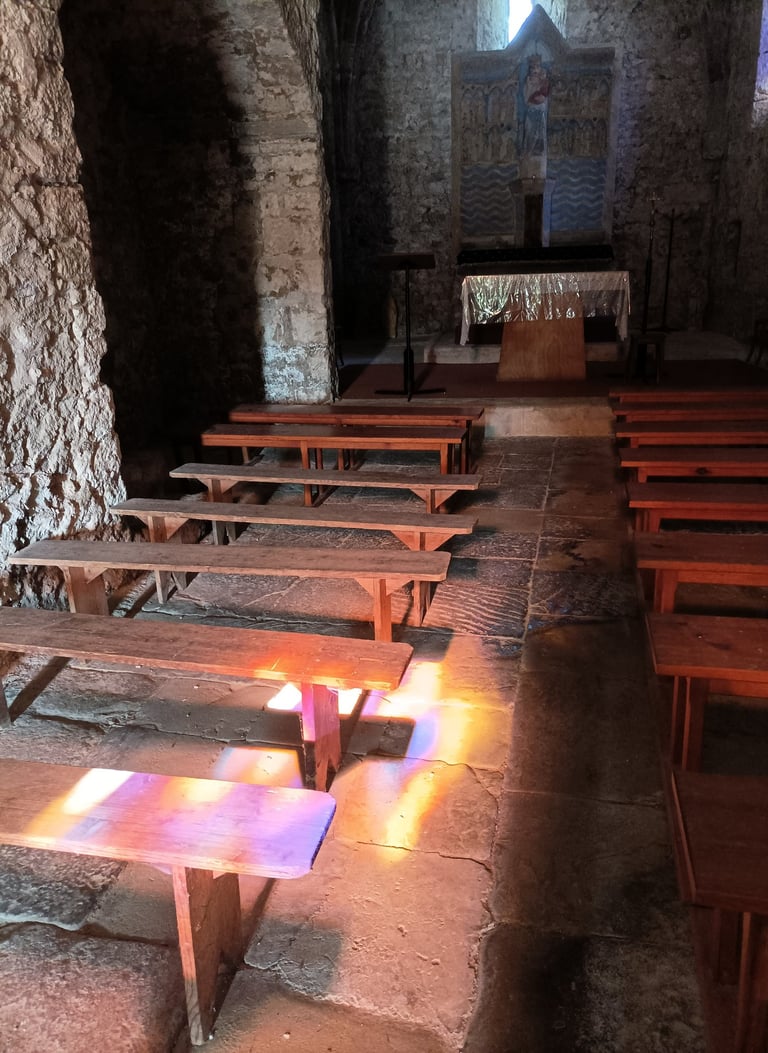

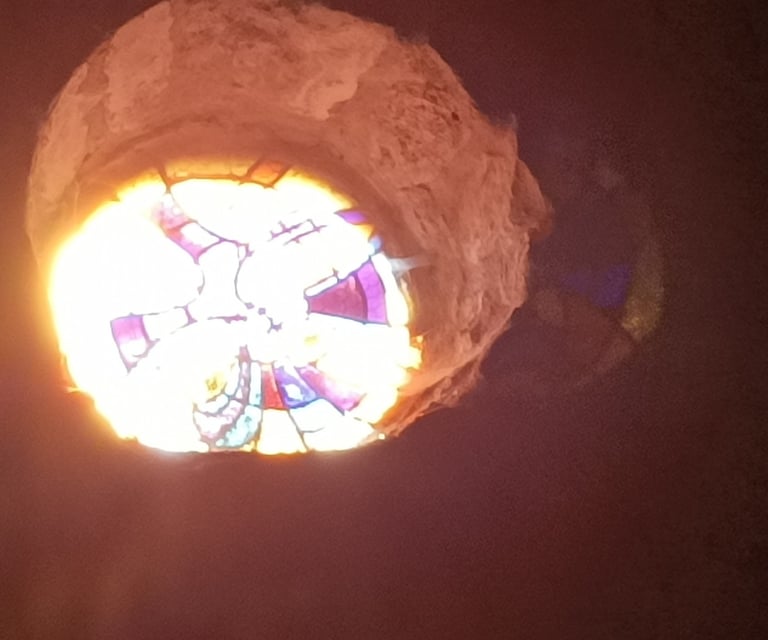

As we entered the church the evening sun cast a magical light over the pews from a small rose window above the entrance. At the far end we could see the altar that we had come to visit.
But it is this altar that has caused such a stir . In 1929 a certain archivist Oudot de Dainville, made a report as Inspector of Antiquities. In it he expressed outrage at what Paul Dardé, this 'cad' and 'author of mediocre sculptures in Lodève,Montpellier and the surrounding area ' had done. He noted that the head of the original central statue of the Virgin and Child had become separated from the original; and lay by the church door. Worse still it had been adulterated. Dardé had "slanted the eyes, thinned the wings of the nose, hooked this one , thickened the lips and reduced the chin , so that as it is now it could very well serve as a sign for an opium den." This piece still stands on a ledge as you enter the church. This is how it appears today. What do you think?

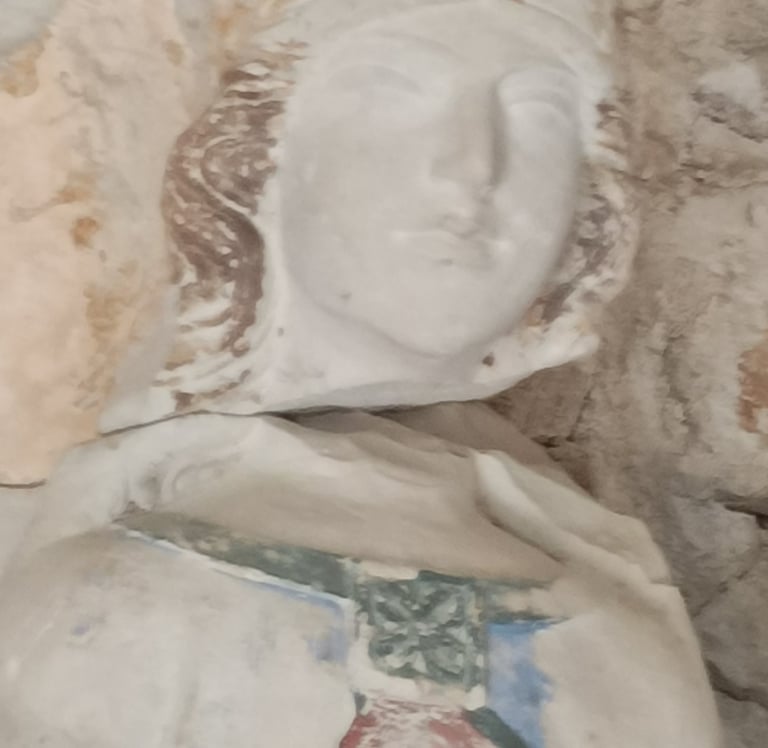
As for the current state of the altar piece you will see that Dardé has created a new Virgin's head and child in his own style. He also did extensive work to fortify the base of the structure, while also creating a scene of undulating waves beneath it all which is painted blue, or what Oudot de Dainville scathingly called 'wheelwright blue.' Here are some pictures for you to decide what you feel about it.
